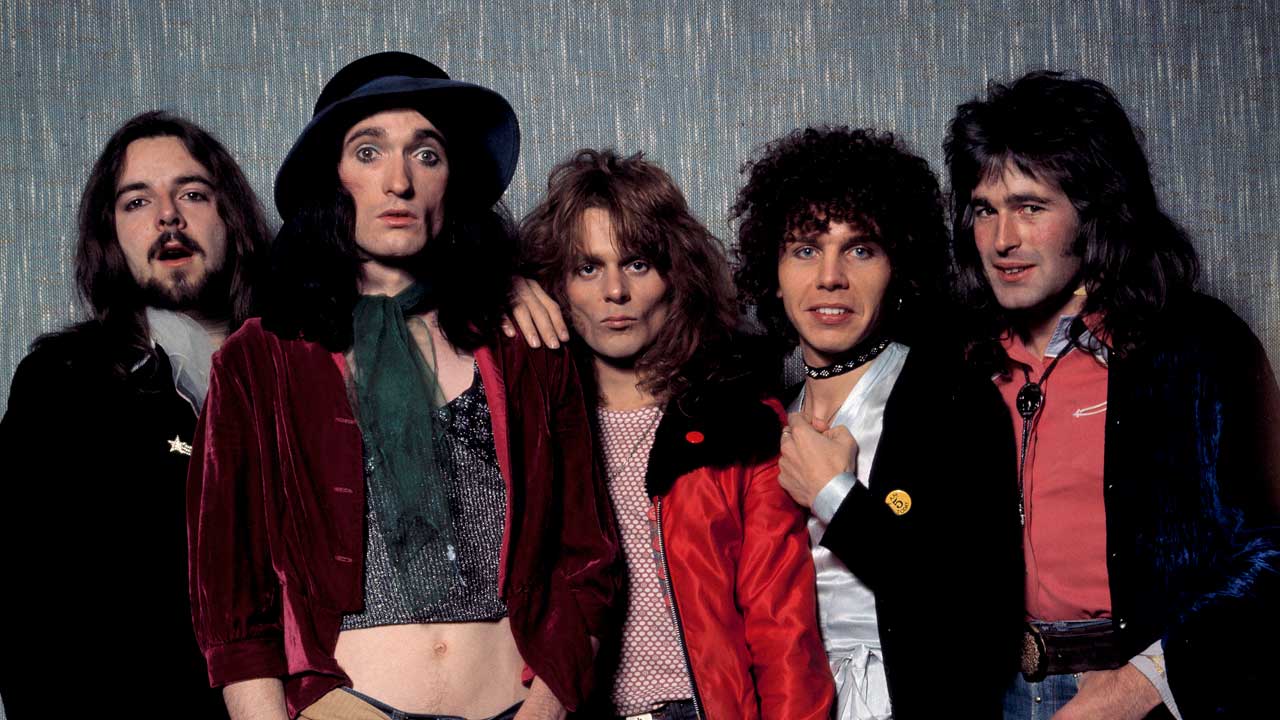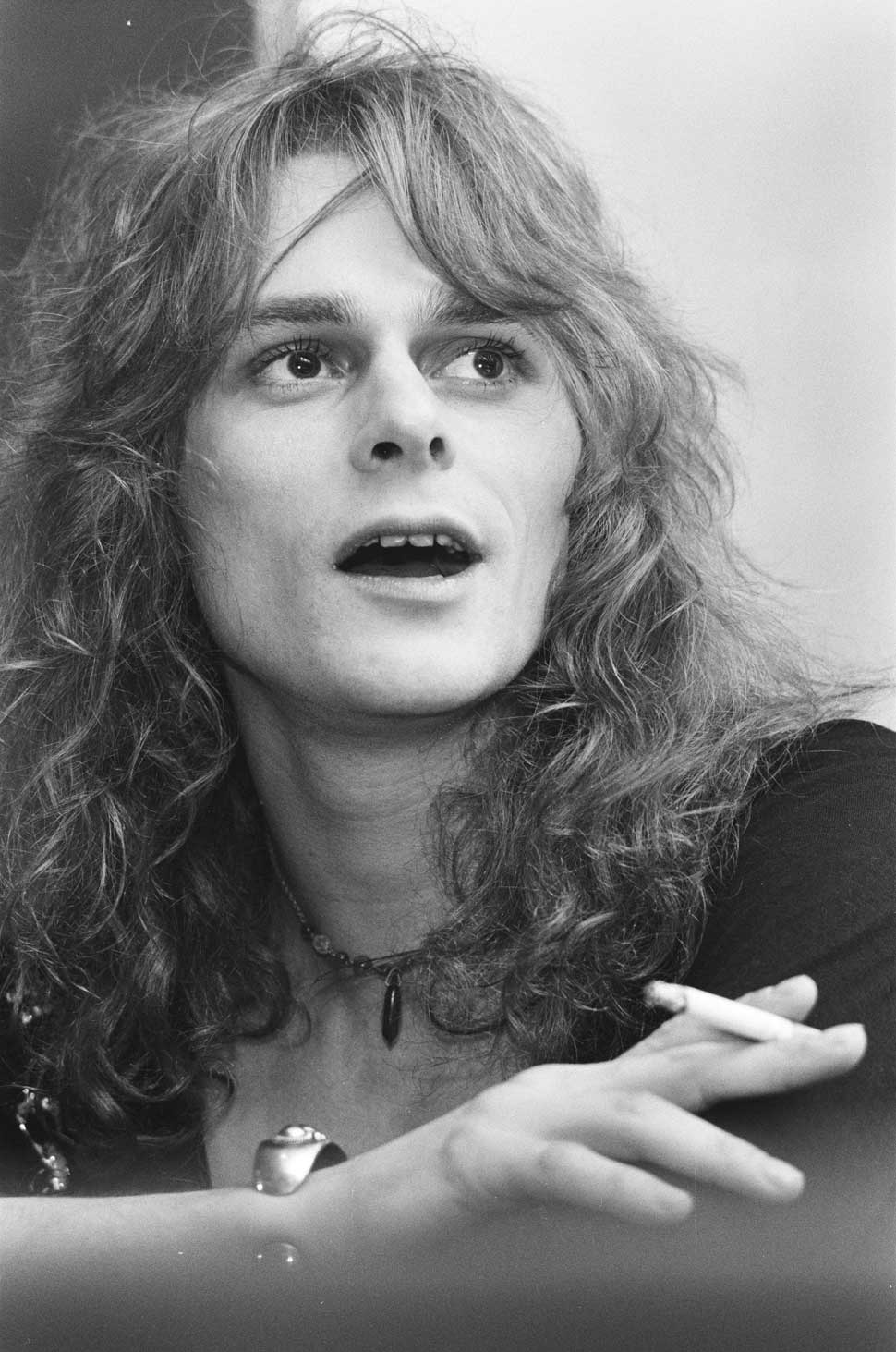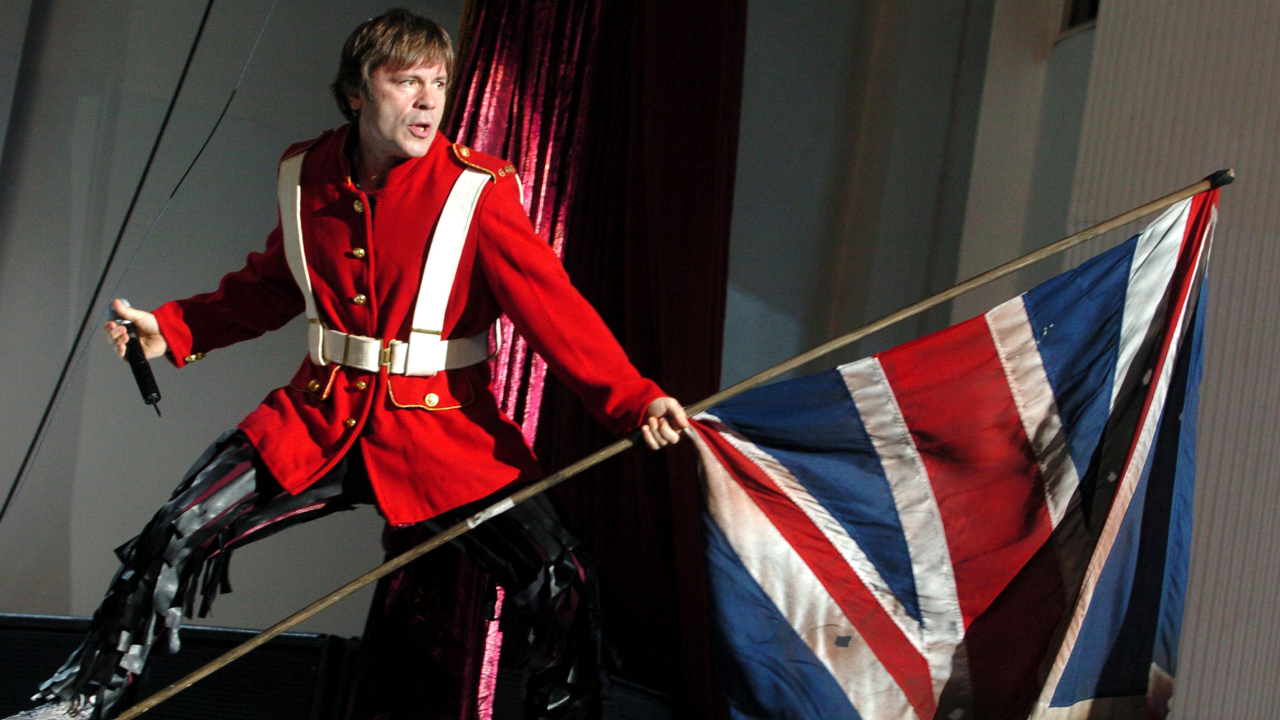Silverhead could have been huge: instead they imploded from a mix of class-A chemicals and "mad, decadent sex"
British glam rockers Silverhead provided the musical template for Hanoi Rocks, Mötley Crüe and Poison, and in frontman Michael Des Barres they gave Hollywood a star

Many of you will never have heard of Silverhead. The pseudo-flowery moniker of frontman Michael Des Barres might not tinkle even the faintest of bells. But bear with us. Chances are you will have come across Des Barres’s corvine, sculpted, asexual visage at least once in your life.
For, apart from being the ‘head’ of Silverhead, Des Barres also performed in front of millions at the original Live Aid, with Duran Duran offshoot Power Station.
Moreover, in his other (now main) profession as an actor, Des Barres has appeared in some of the biggest sitcoms in American TV history including Roseanne, Frasier and Seinfeld. That’s not to forget Des Barres’s role as gadget detective MacGuyver’s long-suffering sidekick, Murdoc, for six years.
But back in the turgid, self-obsessed 70s, Silverhead came on as strong and adrenalised as a breath of fresh crack. They were a coherent British version of The New York Dolls – and could actually play their instruments! Covered in slap and mascara, adorned in ephemeral, tight, feminine schmutter, Silverhead had the arrogant swagger and wasted elegance of the 60s Stones. They also had the musical smarts to be a viable UK counterpart to the then up-and-coming Aerosmith.
Like their only adequate British rivals, The Heavy Metal Kids, Silverhead arrived with an attitude of ‘we’ve already made it’. This endeared them to a small clique of dedicated fans and righteously pissed off the critics.
As Des Barres revealed in an early interview: “My whole philosophy is that every song is an encore, and with that attitude it’s great if the punters have bought the record. But if they haven’t you look like a cunt.”
Like The Heavy Metal Kids, Silverhead’s career had a messy and unresolved finale. But along the way they produced two fantastic, classic albums (1972’s self-titled Silverhead and 1973’s totally debauched 16 & Savaged), plus a third, uncompleted masterpiece (Brutiful). Throughout, Des Barres led a totally hedonistic lifestyle but – unlike Heavy Metal Kids leader Gary Holton – he managed to avoid the Grim Reaper.
Sign up below to get the latest from Classic Rock, plus exclusive special offers, direct to your inbox!

Post-Silverhead, Des Barres relocated to the US and has now been clean and sober for decades. A young and vital 58-year-old [this feature was first published in 2006], he is currently working on a biopic based on the life of Andy Warhol muse Edie Sedgwick (immortalised in The Cult’s Edie). The film also features top-drawer acting talent including Sienna Miller and Guy Pearce.
Semi-retired as a singer, Des Barres still regularly appears with the jobbing superstars’ hobbyhorse Camp Freddy, which has included the likes of Rob Zombie, Dave Navarro, Steve Jones, Gavin Rossdale, Lemmy, Juliette Lewis, Robbie Williams and various members of Velvet Revolver among its luminaries.
During an hour of lively conversation with a flamboyant, occasionally outrageous and always outspoken Des Barres, he rapidly went from being a lost legend to a very live and fuckin’ kicking superstar. It’s great when one of your heroes doesn't turn out to be a bitter and twisted knobhead.
Des Barres was born out of wedlock in 1948 to highly colourful parentage: his father was a one-time Swiss aristocrat and self-proclaimed wastrel. Philip Augustus Des Barres was the proverbial black sheep of the family. His mother was an eccentric, bohemian character with aspirations to become the next Billie Holiday. A volatile mix, they separated and at a very early age Michael found himself being farmed out to boarding school. (By now his father was destitute but fortunately his son’s education had already been paid for.)
“I was exposed to eight years of academia, cricket and mutual masturbation,” Des Barres recalls.
At 16, the rebellion and testosterone set in. After being expelled Des Barres took the only alternative to unemployment by joining the illustrious Corona Drama School in Hammersmith, west London. This quickly led to a small part in the movie To Sir With Love, a highly charged school drama that also featured Lulu. It was 1967, and London was definitely swinging in every direction…
Des Barres: “Suddenly it was all crushed velvet, hashish and Lindsay Kemp. I transformed into the bastard child of Aleister Crowley and Marilyn Monroe. I came to many realisations, the main one being that I would do as many drugs as I could and stride the stage dressed in the most spectacular outfits.”
Having met and married a jobbing actress called Wendy, Michael immersed himself in a left-field, self-indulgent existence. Influenced by ground-breaking musicals such as Hair and The Rocky Horror Show, he saw the potential in mixing rock with theatre.
A leading role in The Dirtiest Show In Town (the first all-nude musical) led to a chance meeting with Andrew Lloyd Webber. Using his newly found street-smarts, Michael persuaded the maestro to grant him an audience.
“I went to Lloyd Webber’s house wearing a green bowler hat and played him a song I’d written that morning called Will You Finance My Rock’N’Roll Band. And he did! Lloyd Webber was a mentor. He was enamoured with me. He could see both a public schoolboy and a street urchin in me.”
The Lloyd Webber connection led an encounter with Ian Gillan, who was playing the lead in the blockbusting musical Jesus Christ Superstar. Deep Purple’s management, who were also involved in theatre, were immediately charmed by Des Barres’s chutzpah. They signed him up and went about the task of putting a band together.
The original Silverhead line-up featured Steve Forrest (guitar), Pete Thompson (drums), Rod ‘The Rook’ Davies (guitar) and Nigel Harrison (bass). Within minutes of the ink drying on their contract the band found themselves flung in the deep end, doing a tour of Japan supporting Purple.
Des Barres: “Like every other band with a blond singer wearing make-up that toured Japan, we were worshipped as gods. Three weeks later, coming out of a brandy-induced trance, I woke up with a broken wrist, which I got falling off a stage in Tokyo. For the rest of the year I wore a cast, silver of course, with lipstick and kisses all over it. I was in agony… and ecstasy.”
The first Silverhead album was released shortly afterward. It was, and remains, a classic record full of memorable, theatrical camp, accurately reflecting Des Barres’s opiated pirate swagger. The album features epic metallic torch-songs such as Johnny, In Your Eyes and Wounded Heart, coupled with thunderous anthems like Rolling With My Baby and Ace Supreme.
Michael’s memories of Silverhead’s debut fill him with equal measures of pride and pain. “Still today all these cute little boys with bangs will come and fall at my feet. But for a while I couldn’t bear to listen to that record, because it reminded me of your girlfriend fucking your other girlfriend while she taunted you about running out of drugs.”
Silverhead’s sound and attitude provided the template for bands such as Japan (Adolescent Sex era), Hanoi Rocks, Mötley Crüe and Poison. But unfortunately their debut was met with a critical pasting and very little success. Steve Forrest departed and was replaced by Robbie Blunt, a far more macho option. Blunt was a level-headed Brummie, friend of Led Zeppelin and Robert Plant’s guitar tutor.
Des Barres: “Robbie gave the band authenticity. And he was a manly man. Giving him make-up was always interesting – it was like putting Bernard Bresslaw in leather pants!”
Live, Silverhead were always exciting, and by the time they released their second album, 16 & Savaged, they were on fire. With a controversial cover depicting a ravaged and obviously underage nubile (modelled by actress Judy Erlington) in the toilets of notorious London hangout The Speakeasy, and with song-titles such as More Than Your Mouth Can Hold, the agenda was clear.
The album was heavily influenced by America, and specifically Hollywood. Des Barres was so overwhelmed and impressed by Hollywood that he immediately relocated and has stayed there ever since.
“There was the same response to Silverhead in the US as there was to the Sex Pistols – sheer fucking hatred. Well, to be honest, the hatred came from the boys and the love came from the little girls. 16 & Savaged was very much a Hollywood album – it was blood on the Sunset Strip. The scene was sequins, teenage girls and absolute mad, decadent sex wherever you looked.”
16 & Savaged should have been the record to break Silverhead. But they proceeded to implode via a mixture of bad management, rampant egos and class-A chemicals.
Des Barres: “I became so consumed by drugs, it killed the creativity – and that was that. The idea of a third album was exhausting.”
Silverhead disbanded, Nigel Harrison went on to greater success with Blondie, and Des Barres made a futile stab at a solo career. Plans to release a single about a fan crushed to death at a David Cassidy show were quashed by outraged tabloids. (Called Teeny Bopper Death, this was hardly surprising.)
Michael’s addiction took a downward spiral. But soon enough a new love in his life, celebrity groupie Miss Pamela, arrived on the scene to soothe his addled psyche. Pamela helped Des Barres find salvation during one of his spectacular rock bottoms. It led to the formation of another band that should’ve been, could’ve been: Detective.
Through Pamela’s connection with Jimmy Page, Detective found themselves being courted and eventually signed by Led Zeppelin’s Swan Song label. “Robert Plant and Jimmy were fans of Silverhead,” says Des Barres. “I remember we once played a gig in Wales – there were seven people in the audience, four of whom were members of Led Zeppelin.”
Des Barres’s and Page’s paths had crossed before. They shared many interests, both musical and esoteric. As Michael explained: “We were both interested in Aleister Crowley, the black arts and all that bollocks. Jimmy is an intellectual, a brilliant man.”
Very heavy and not at all humble, Detective released a phenomenal self-titled debut album and built up a strong local following in Los Angeles. But by the time it came to record a follow up, It Takes One To Know One, Michael’s demons had a firm grip of his glittering but faded coat-tails.
“The album was all done in LA in a fog. I was very, very addicted to everything. After a couple of albums I couldn’t sustain it. The second album didn’t have swing or style. It was turgid and you couldn’t dance to it. It was all rock posturing and I was veering away from standing there like Paul Rodgers. I was never interested in milking things. I don’t do dairy.”
Michael abandoned rock’n’roll for a brief spell and immersed himself in acting work. But later he had another stab at forming a band, this time with Sex Pistols guitarist Steve Jones. I saw Chequered Past in London and although visibly damaged by his vices, Des Barres still had the charisma and energy that could only be matched by his old drinking buddy Iggy Pop. Again the band’s progress was hampered by Michael’s physical state, but he was slowly beginning to clean up his act. Amazingly, more success followed shortly after when synth-popsters Animotion took one of Des Barres’s songs, Obsession, to the top of the US chart.
By now ‘clean and serene’, Des Barres was called up to join Power Station as a last-minute replacement for Robert Palmer. The band’s tour included a spot on Live Aid, which featured a dazzling array of new-generation hedonists. I wondered how Des Barres felt to be probably the only sober person at Live Aid?
“I felt both righteous and judgmental. Superior and sad. I felt the tragedy of these young men who were missing the most brilliant moment of their lives out of fear. I guess the real symbolism is that my dear friend and counterpart, Robert Palmer, is dead. We were both the same age.”
Trying to capitalise on the media coverage of Live Aid, Michael released a solo album, Somebody Up There Likes Me. A tired and dated affair, it was a sad curtain call to what could have been a hugely successful musical career.
Now committed to acting and fatherhood, today Des Barres is more successful and content than he has ever been. But I wonder how things would have been if Silverhead had achieved the success they so richly deserved. As my final question I asked what Michael thought his younger, more arrogant self might ask his more mature counterpart.
“Oh my God, darling,” he gasped, “can you still fit into those trousers?”
This feature originally appeared in Classic Rock 90, published in March 2006. The 2021 documentary Michael Des Barres: Who Do You Want Me To Be? is available on Amazon Prime.
Pete Makowski joined Sounds music weekly aged 15 as a messenger boy, and was soon reviewing albums and doing interviews with his favourite bands. He also wrote for Kerrang!, Soundcheck, Metal Hammer and This Is Rock, and was a press officer for Black Sabbath, Hawkwind, Motörhead, the New York Dolls and more. Sounds Editor Geoff Barton introduced Makowski to photographer Ross Halfin with the words, “You’ll be bad for each other,” creating a partnership that spanned three decades. Halfin and Makowski worked on dozens of articles for Classic Rock in the 00-10s, bringing back stories that crackled with humour and insight. Pete died in November 2021.

